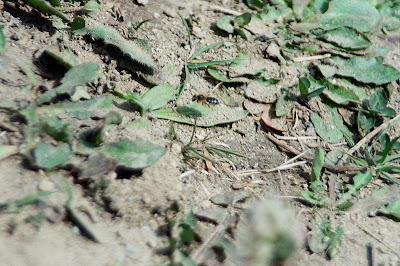Here is Frank's photo number 017
"It shows a wooden tray infested with foreign larvae, plus at least four different-looking types of wiry frass. Are they all from the same insect and reflect differences in diet, or might they actually represent different organisms?"
The upper channel possibly contains the pupae of the houdini fly. The lower channel has 3 chambers with wiry frass that probably belongs to the spider beetle.
Lovely photos Frank. Sorry we could not be more clear on the ID of these insects. Let me know if you have placed them in a petri dish to develop into full adult.








.jpg)
.jpg)
.jpg)
.jpg)